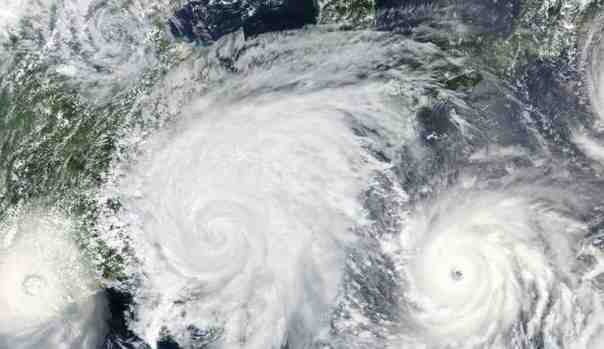
Part 1: The Burning Issue – Climate Change and its Human Fingerprint
Climate change, the long-term alteration of temperature and typical weather patterns in a place, has become a defining issue of our time. While weather fluctuates naturally, the current warming trend is occurring much faster than any previous change in Earth’s history. This rapid shift has ignited a heated debate about the extent to which human activities are driving this phenomenon.
The Science of a Warming World:
Scientists overwhelmingly agree that the Earth’s average temperature has risen by about 1 degree Celsius since the late 19th century, with the last decade being the hottest on record.
This warming is attributed to the greenhouse effect, a natural process where certain gases in the atmosphere trap heat from the sun. However, human activities, primarily the burning of fossil fuels like coal, oil, and gas, have significantly increased the concentration of these greenhouse gases, particularly carbon dioxide, in the atmosphere.
The Human Fingerprint:
The debate revolves around the extent to which human activities are the primary cause of this observed warming. Here’s a closer look at the evidence:
- Fingerprints in the Atmosphere: Decades of meticulous data collection show a clear correlation between rising carbon dioxide levels and increasing global temperatures. The isotopic signature of the excess carbon dioxide, distinct from natural sources, points directly to fossil fuel burning.
- Fingerprint in Warming Patterns: The observed warming isn’t uniform across the globe. The pattern of warming aligns with human activity, with the greatest increases occurring in the upper atmosphere, where greenhouse gases trap heat, rather than the surface, as would be expected from natural solar variations.
- Fingerprint in Melting Ice: The dramatic retreat of glaciers and polar ice caps directly correlates with rising temperatures, a clear sign of a warming planet.
The Skeptics and Their Arguments:
Despite overwhelming scientific consensus, a small but vocal group maintains that human influence on climate change is exaggerated or non-existent. Their arguments often center on:
- Natural Variability: Climate naturally changes over time, and some argue these changes could explain the observed warming. However, the rate and pattern of current warming far exceed natural fluctuations.
- Solar Activity: Some point to variations in solar activity as a potential cause. While solar activity can influence climate, its effect is much smaller than that of greenhouse gas emissions.
- Uncertainty in Climate Models: Climate models are complex, and there are some uncertainties. However, the core physics of the greenhouse effect is well-understood, and multiple models from different institutions consistently project future warming from increased greenhouse gases.
Part 2: The Stakes of the Debate – Potential Consequences of Climate Change
Regardless of the precise degree of human influence, the potential consequences of climate change are severe:
- Rising Sea Levels: Melting glaciers and thermal expansion of oceans contribute to rising sea levels, threatening coastal communities and ecosystems.
- More Extreme Weather Events: Climate change is expected to increase the frequency and intensity of extreme weather events like heat waves, droughts, floods, and storms, causing widespread damage and displacement.
- Disruptions to Agriculture: Changes in precipitation patterns and rising temperatures will disrupt agricultural production, leading to food security concerns and potential famine.
- Ocean Acidification: Increased carbon dioxide dissolves in the oceans, making them more acidic, harming marine life and disrupting ocean ecosystems.
- Mass Extinctions: Climate change is projected to accelerate species extinction rates, impacting biodiversity and ecosystem health.
The debate over the extent of human influence on climate change isn’t just an academic exercise. Its resolution has profound implications for how we respond to these potential consequences.
If we acknowledge the significant human role, as the vast majority of scientists do, it underscores the urgent need for global action to reduce greenhouse gas emissions and adopt sustainable practices.
Part 3: Moving Forward – The Path to Mitigation and Adaptation
The international community has recognized the urgency of climate change and taken steps towards mitigation and adaptation. The Paris Agreement, adopted by nearly all nations, aims to limit global warming to well below 2 degrees Celsius, ideally 1.5 degrees, compared to pre-industrial levels.
Achieving this requires a significant shift away from fossil fuels towards renewable energy sources like solar and wind power. It also necessitates increased energy efficiency and sustainable practices in all sectors.
Adaptation strategies are crucial to address the inevitable impacts of climate change. This includes strengthening infrastructure to withstand extreme weather events, developing climate-resilient crops, and investing in early warning systems for natural disasters. Additionally, international cooperation is vital to support developing countries most vulnerable to climate change’s effects.
The debate on the extent of human influence on climate change might persist for some time. However, the overwhelming scientific evidence and the potential consequences for the planet demand immediate action. By transitioning to clean energy, adopting sustainable practices, and investing in adaptation strategies, we can build a more resilient future for generations to come.


